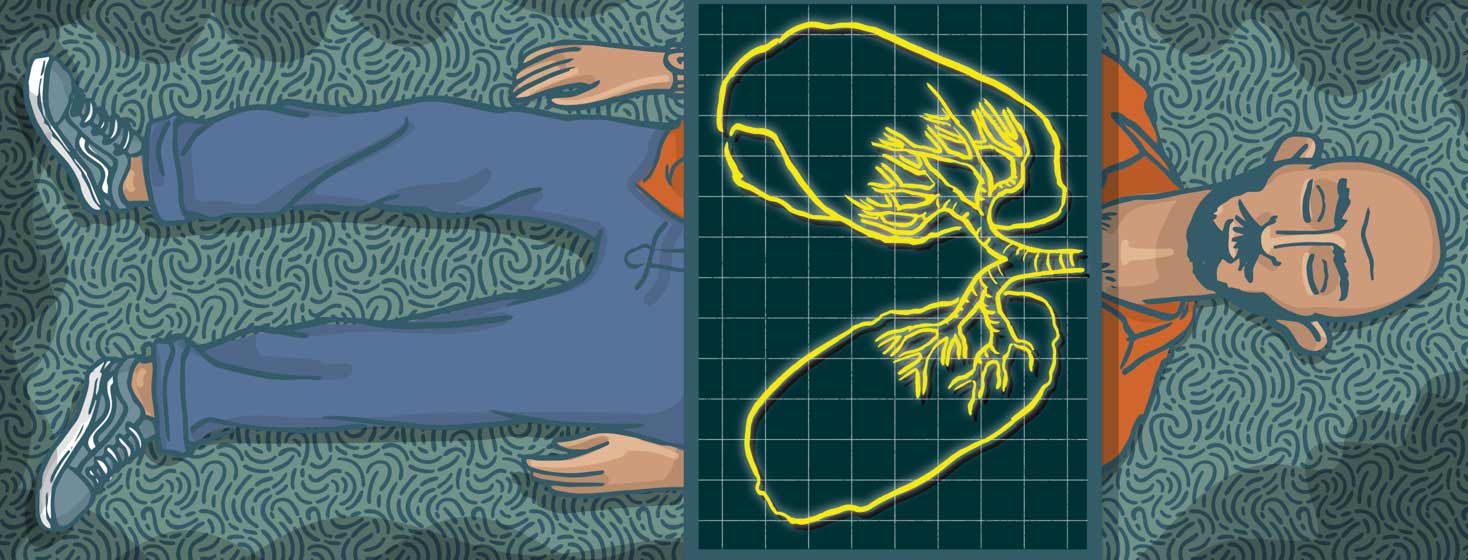Chest Radiographs And CT Scans For Asthma
If you live with asthma, you probably had several tests before receiving your diagnosis. A complete medical history, a physical exam, and some lung tests are generally what doctors rely on to help them determine if you have asthma.1
Chest radiographs and CT scans are also useful tools, not just for diagnosis but for further asthma analysis. Knowing the difference between these 2 tests can be helpful.
What is a chest radiograph?
Also known as a chest X-ray, a chest radiograph uses an X-ray beam. It is considered the best general technique for looking at the lungs, the chest cavity, and the area around the lungs.1,2
To undergo a chest X-ray, you will typically stand in front of a wall-mounted device that holds the X-ray film or a plate that digitally records the image. For the first view, you will probably be asked to stand with your hands on your hips, with your chest pressed against the image plate. For a second view, you may be asked to elevate your arms.3
During the procedure, the X-ray machine emits a small burst of radiation that goes through the body, recording an image. The entire procedure takes only about 15 minutes. When you are finished, you may be asked to wait until the radiologist lets you know that all the needed images have been obtained.3
The majority of people with asthma will have a chest radiograph. However, if you have difficult-to-treat or severe asthma, then a CT (computed tomography) scan may be ordered.
What is a chest CT scan?
Unlike a traditional X-ray, a chest CT creates 2-dimensional, cross-sectional images. The series of computerized views taken from different angles create detailed pictures of your chest area. The computer collects the images and arranges them in order for your doctor to view.4
For a CT scan, you will be instructed to lie flat on the CT scan table. You will move quickly through a scanner, which is a doughnut-shaped device. You may be told to lie still and hold your breath for a few seconds. A CT scanner is open and much less noisy than an MRI, and a CT scan takes less time. If your doctor wants the CT scan done with contrast, you will get an intravenous injection. This may give you a warm feeling throughout your body, but it is just temporary. At the end of the scan, you can go about your activities as usual.4
Why would I need a chest CT for asthma?
A chest CT scan is currently the gold standard to make a diagnosis of asthma, as well as to look for any complications. If you have chronic asthma symptoms or if your symptoms keep recurring, this scan can help doctors pinpoint a diagnosis.1
For example, a CT scan can be helpful in diagnosing allergic bronchopulmonary aspergillosis (ABPA), a condition associated with asthma. ABPA is most common in people with longstanding asthma. It has symptoms that are very similar to asthma, like wheezing, shortness of breath, weight loss, and fatigue.5-7
A CT scan can also be helpful in detecting health conditions that can seem like asthma. Another possible condition that your doctor may want to rule out with a CT scan is bronchiectasis. Bronchiectasis causes your bronchial tubes to become thickened from inflammation. It can cause periodic flare-ups of breathing difficulties.5
CT scans are used to check for complications of asthma and to rule out other health conditions. In the future, these and other imaging scans may also be useful in providing personalized asthma care.1

Join the conversation